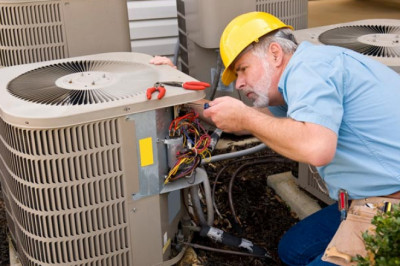views

Heat treatment is a critical aspect of material creation. High temperatures alter the microstructure of metal during fabrication, and this alteration plays an essential role in the mechanical properties of the material.
The treatment process heats a metal without letting it reach the melting point or molten stage. Afterward, the metal is cooled in a controlled manner to achieve desired mechanical properties, such as making the metal stronger, more malleable, more resistant to abrasion, or more pliable.
Heat Treatment Theory
All heat treatments involve the heating and cooling of metals, which require particular tools and circumstances to do correctly. Equipment is important because it affects the product’s properties.
For example, your heat treatment furnace must be the right size and type for proper temperature control. You must also have the appropriate gas mixture in the heating chamber and the right quenching media to cool the metal properly.
There are different types of heat treatment for different kinds of metals, which vary in the following factors:
- Heating temperatures
- Cooling rates
- Quenching types
All heat treatment methods also follow the same stages. We’ve created an infographic that will supply everything you need to know about these different heat treatment methods and their uses.
3 Stages of Heat Treatment
- Heating stage
The metal is heated to a specific temperature and cooled to harden the material in this stage. Depending on what the material needs to perform properly, heat treatment can be used at different stages in the manufacturing process. By doing so, the metal undergoes certain changes in its properties.
Uneven heating can cause one section of the metal to expand faster, resulting in cracks and deformities. To ensure that this doesn’t happen, the metal must be heated uniformly but slowly using the right heating rate. You choose the heating rate according to these factors:
- Heat conductivity
- Condition of the metal
- Size and cross-section of the metal
- Soaking stage
Also called the holding stage, the soak time of a metal refers to how long it is heated. The length of soak time plays an integral part in heat treatment, ultimately changing the metal’s physical properties. It is heated and kept at a certain temperature, then cooled to achieve the desired effect. During heating, the metal’s physical structure, also called the microstructure, changes, altering its physical properties.
To determine the correct soaking duration, you’ll need the mass of the material and its chemical analysis. You can determine the soaking period for uneven cross-sections using the largest section. Heat the metal slowly to just below the temperature where structural change happens. Then, hold that temperature until the temperature of the whole piece is consistent throughout.
- Cooling stage
After the soaking stage, the metal must be cooled in a certain manner. The cooling stage can also cause structural changes. You can use different media to control the cooling rate, such as brine, oil, water, or forced air.
Brine absorbs heat fastest, while air is the slowest. The general guidelines depending on the material are to use water to harden carbon steels, oil to harden alloy steels, and water to quench nonferrous metals.
Knowing what temperatures to cool and heat metals at and for how long is a complicated process that requires professional help and guidance. Lab furnaces are a good investment if you frequently perform heat treatment. The controlled environment allows for high precision when slow cooling is necessary.












